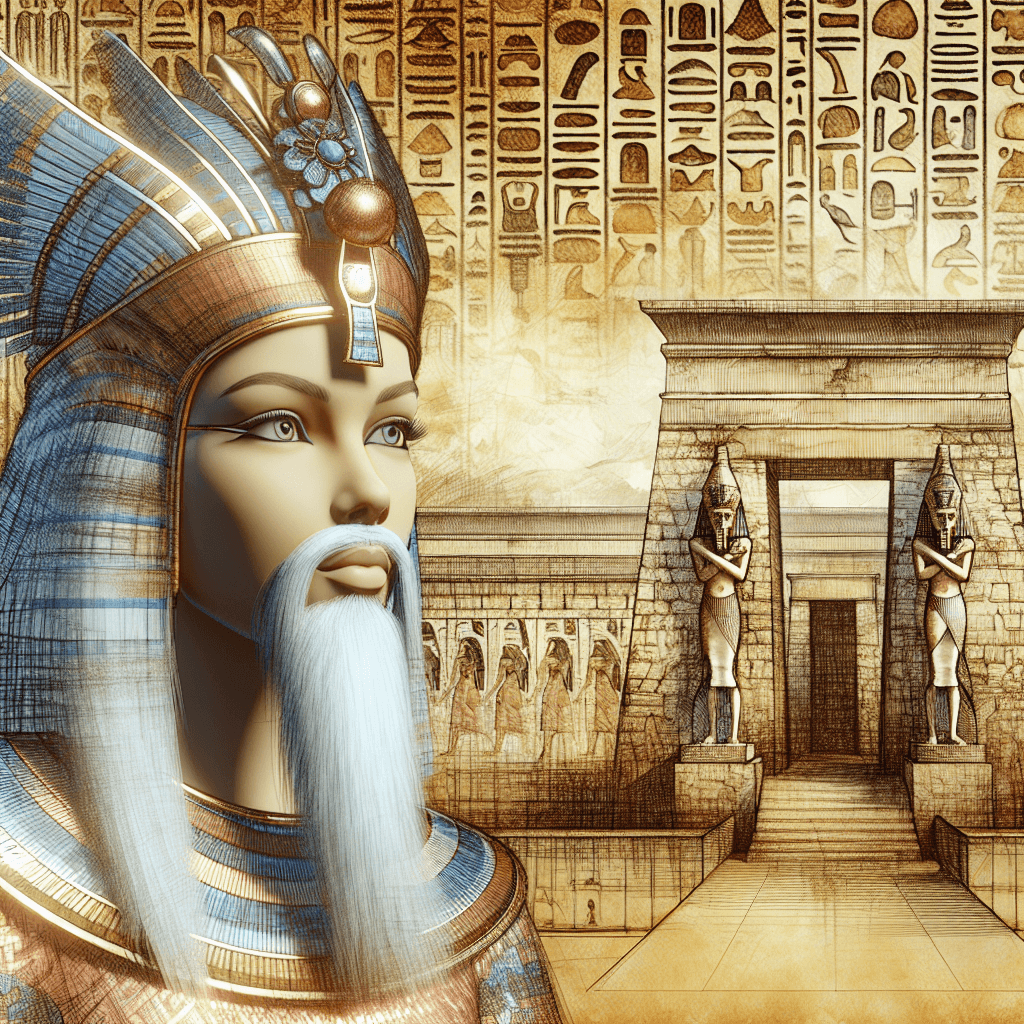Why were ancient Egyptian pharaohs, even female ones, often depicted with a fake beard strapped on
It wasn't about masculinity, it was about divinity; discover why Egypt's most powerful rulers, even queens, strapped on a fake beard to prove they were gods on Earth.


Too Long; Didn't Read
TLDR: The fake beard was a symbol of divine power and kingship, linking the pharaoh to the god Osiris. It was not about gender, so female pharaohs wore it as part of the official royal uniform to show they held the king's authority.
Beard of the Gods: Why Were Ancient Egyptian Pharaohs, Even Female Ones, Often Depicted with a Fake Beard?
When you picture an ancient Egyptian pharaoh, a few key images come to mind: a golden death mask, a towering pyramid, and perhaps a powerful figure wearing an ornate headdress. But one of the most curious and consistent symbols of their rule is the false beard, a stylized chin accessory strapped onto even the most powerful female rulers like Hatshepsut. This wasn't a fashion statement or an attempt to appear more masculine. Instead, this peculiar piece of regalia was a profound symbol, deeply woven into the Egyptian concepts of divinity, tradition, and the very nature of kingship itself. This post will delve into the symbolic reasons why the false beard was an essential part of the pharaoh’s image.
A Symbol of Divinity, Not Masculinity
The primary reason for the pharaonic beard had little to do with gender and everything to do with godhood. In ancient Egyptian art, gods were often depicted with beards. The most prominent example was Osiris, the god of the afterlife, fertility, and resurrection, who was consistently shown with a long, braided, and distinctly curved beard. As the pharaoh was considered the living embodiment of the god Horus and a divine intermediary between the gods and humanity, adopting this symbol was a visual way to assert their sacred status.
By strapping on the false beard, known as a "postiche," the pharaoh was visually aligning themselves with the gods. It was part of a sacred uniform, much like the striped nemes headdress or the crook and flail. It signaled that the person wearing it was not just a mortal leader but a divine ruler whose authority came directly from the heavens.
The Uniform of Kingship
For the ancient Egyptians, the office of pharaoh was an institution that transcended the individual. To be a successful ruler, one had to conform to the established iconography of power. The false beard was a critical part of this royal costume, worn during important religious ceremonies and state functions to reinforce the pharaoh's official role.
This explains why we see female pharaohs adopting the symbol. For rulers like Hatshepsut, who reigned during the 18th Dynasty, legitimacy was paramount. To rule effectively, she had to present herself within the traditional framework of kingship.
- Maintaining Tradition: By adopting the full regalia of a pharaoh, including the beard, Hatshepsut asserted that she was not a temporary regent but a true and legitimate king.
- Symbol Over Gender: Her statues often show a blend of feminine features with the masculine symbols of power. This indicates it wasn't about her pretending to be a man, but about fulfilling the sacred and conceptually male office of pharaoh. The beard belonged to the role, not the person.
Different Beards for Different Contexts
The Egyptians were highly specific, and the style of the false beard held its own meaning. Art and sculpture reveal a subtle but important distinction:
- Living Pharaohs: Depicted with a straight, narrow beard.
- Gods and Deceased Pharaohs: Shown with the longer, plaited beard with a distinct upward curve at the end—the "Osirian" beard.
This change in depiction after death was significant. It symbolized the pharaoh’s successful transition into the afterlife and their final transformation into a divine being, becoming one with Osiris. The golden death mask of Tutankhamun, for example, features this curved divine beard, signifying his deification. This detail underscores that the beard was a complex and evolving symbol of the pharaoh's journey from a living god on Earth to an eternal deity.
Conclusion
The false beard of the Egyptian pharaohs was far more than a simple accessory. It was a potent symbol of divinity, a link to the god Osiris, and an essential part of the uniform of kingship that legitimized their right to rule. By wearing it, both male and female pharaohs communicated their sacred authority and their role as the crucial link between the mortal and divine worlds. Rather than being a strange historical curiosity, the pharaonic beard offers a fascinating window into the ancient Egyptian worldview, where power, religion, and symbolic representation were inextricably linked, creating an image of leadership that has endured for millennia.
More Articles

Why do movie punches sound so much crunchier and louder than real ones?
That sickening, bone-crunching punch you hear in the movies is a lie, and the secret ingredient is probably sitting in your refrigerator right now.

What makes a beer bottle suddenly foam over just from a light tap on top?
It’s not magic, it’s a shockwave; discover the explosive physics that turns a gentle tap on your beer bottle into an instant foamy geyser.

Why do police officers touch the back of a car during a traffic stop?
It’s not a random habit; that simple touch is a calculated, old-school tactic designed to leave a crucial and potentially life-saving piece of evidence behind.